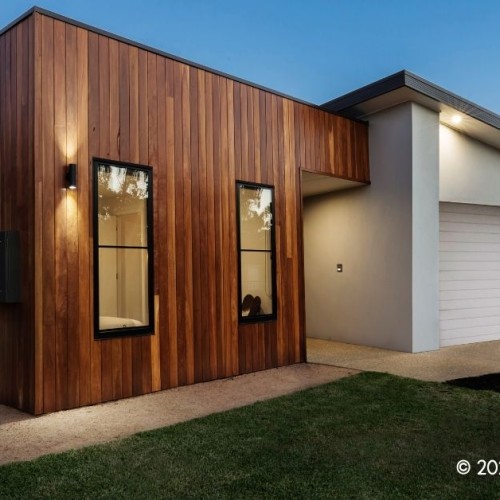Maintaining your home’s outdoor spaces is crucial not only for enhancing curb appeal but also for creating a vibrant and healthy environment that can be enjoyed throughout the year. Well-kept gardens, lawns, and patios serve as a haven for relaxation and entertainment, and they contribute significantly to the overall aesthetic and market value of your property.
Whether you have a small backyard or expansive grounds, keeping these areas in top shape requires attention to detail and a proactive approach. This guide will provide you with practical tips on how to maintain your outdoor spaces effectively, ensuring they remain beautiful and functional no matter the season.
1. Regular Lawn Care
A lush, green lawn is often the centerpiece of a home’s outdoor space. Achieving this involves a consistent routine of mowing, watering, and fertilizing. Start by setting your mower blades to the correct height; cutting your grass too short can weaken it, making it more susceptible to diseases and weed invasion. Watering should be deep and infrequent to encourage strong root growth, ideally early in the morning, to minimize evaporation and fungal growth.
Regular fertilization, tailored to the needs of your specific grass type, will provide the necessary nutrients for robust health. Also, aerate your lawn annually to improve nutrient absorption and alleviate soil compaction.
2. Managing Overgrown Trees and Bushes
Overgrown trees and bushes can obscure views, create shadows that inhibit undergrowth, and even pose risks to your property during storms. Trimming and pruning these can be a hefty job, but it’s crucial for maintaining the health and aesthetics of your garden. A chainsaw is an essential tool for this task, offering the power and precision needed to make quick work of even the thickest branches.
If you’re looking to purchase a chainsaw, ECHO chainsaws provide excellent performance and durability, ensuring you can manage your garden efficiently.
3. Seasonal Cleaning
As the seasons change, so do the needs of your outdoor spaces. In autumn, leaves can accumulate quickly, smothering grass and creating a breeding ground for pests and diseases. Use a sturdy rake or a powerful leaf blower to clear your yard of debris, paying special attention to corners and underhedges where organic material tends to collect. In spring, a thorough cleaning can invigorate your landscape by removing the last of the winter debris and preparing the garden beds for new plantings.
4. Garden Mulching
Mulching is a key element of garden maintenance that conserves moisture, suppresses weeds, and enhances soil quality. It also adds a polished look to garden beds. Organic mulches like bark chips, straw, or grass clippings not only decompose over time, feeding the soil but also help maintain an even soil temperature. Apply a 2-3 inch layer around plants, making sure to keep the mulch a few inches away from stem bases to prevent rot.
5. Pest Control
Effective pest control is essential to keep your garden healthy. Start by selecting disease-resistant plant varieties and positioning plants in favorable conditions according to their sun and water needs. Encourage beneficial insects that naturally control pest populations by planting a diverse range of species. For more direct intervention, opt for eco-friendly pest control methods such as insecticidal soaps or neem oil treatments, which are less harmful to the environment than synthetic chemicals.
6. Plant Selection
Choosing the right plants for your garden is critical not only for aesthetics but also for ensuring long-term growth and sustainability. Opt for native plants that are adapted to your local climate and soil conditions, as they will thrive with minimal intervention, reducing the need for water, fertilizers, and pesticides. Native species are also more resistant to local pests and diseases. Consider the sun exposure and soil type of your garden when selecting plants to ensure that each plant gets the environment it needs to flourish.
7. Efficient Watering Systems
Water conservation is key to sustainable gardening. Installing an efficient watering system like drip irrigation can significantly reduce water wastage while ensuring your plants receive the necessary hydration directly at their roots, where it’s most needed.
Drip systems are especially effective in larger gardens or for vegetable patches where precise water delivery is crucial. Additionally, rainwater should be collected in barrels for use during dry spells. This not only conserves water but also reduces your water bill.
8. Pathway Maintenance
Well-maintained pathways contribute to the safety and beauty of your garden. Regularly check your paths for cracks, weeds, and debris. Repair any damages promptly to prevent accidents and deterioration. If you have gravel paths, rake them to keep the surface even and free from weeds.
For paved pathways, consider using a natural weed killer or boiling water to handle weed growth without chemicals. Keeping your pathways clear not only makes your garden more inviting but also prevents the growth of harmful plants that can encroach on other garden areas.
9. Outdoor Lighting
Outdoor lighting extends the usability of your garden into the evening hours and increases security. Strategically placed lights can highlight landscape features, light up walkways, and create a warm ambiance for evening gatherings.
Opt for LED lights for their long life span and energy efficiency. Solar-powered lights are an excellent choice for outdoor spaces as they require no wiring and minimal maintenance, absorbing sunlight during the day to illuminate your garden at night.
10. Regular Furniture Care
Outdoor furniture is exposed to the elements and requires regular maintenance to keep it looking its best. Clean your furniture at the beginning and end of each outdoor season with appropriate cleaners to prevent the buildup of dirt and mildew. For wood furniture, reapply sealant or stain yearly to protect against weathering. Store cushions and delicate pieces in a dry place when not in use to extend their life. Using covers for your furniture can also protect them from rain, sun, and debris, maintaining their condition year-round.
Conclusion
Maintaining your home’s outdoor spaces throughout the year is crucial for ensuring they remain functional, attractive, and ready for enjoyment at any moment. By following these strategies, you can create a welcoming and beautiful environment that enhances your home and lifestyle. Each step, whether it’s choosing the right plants or installing efficient lighting, contributes to a holistic approach to garden and yard maintenance.
Remember, a little effort goes a long way in making your outdoor spaces vibrant and inviting all year round. Equip yourself with the right tools and enjoy the benefits of a well-maintained outdoor area.







